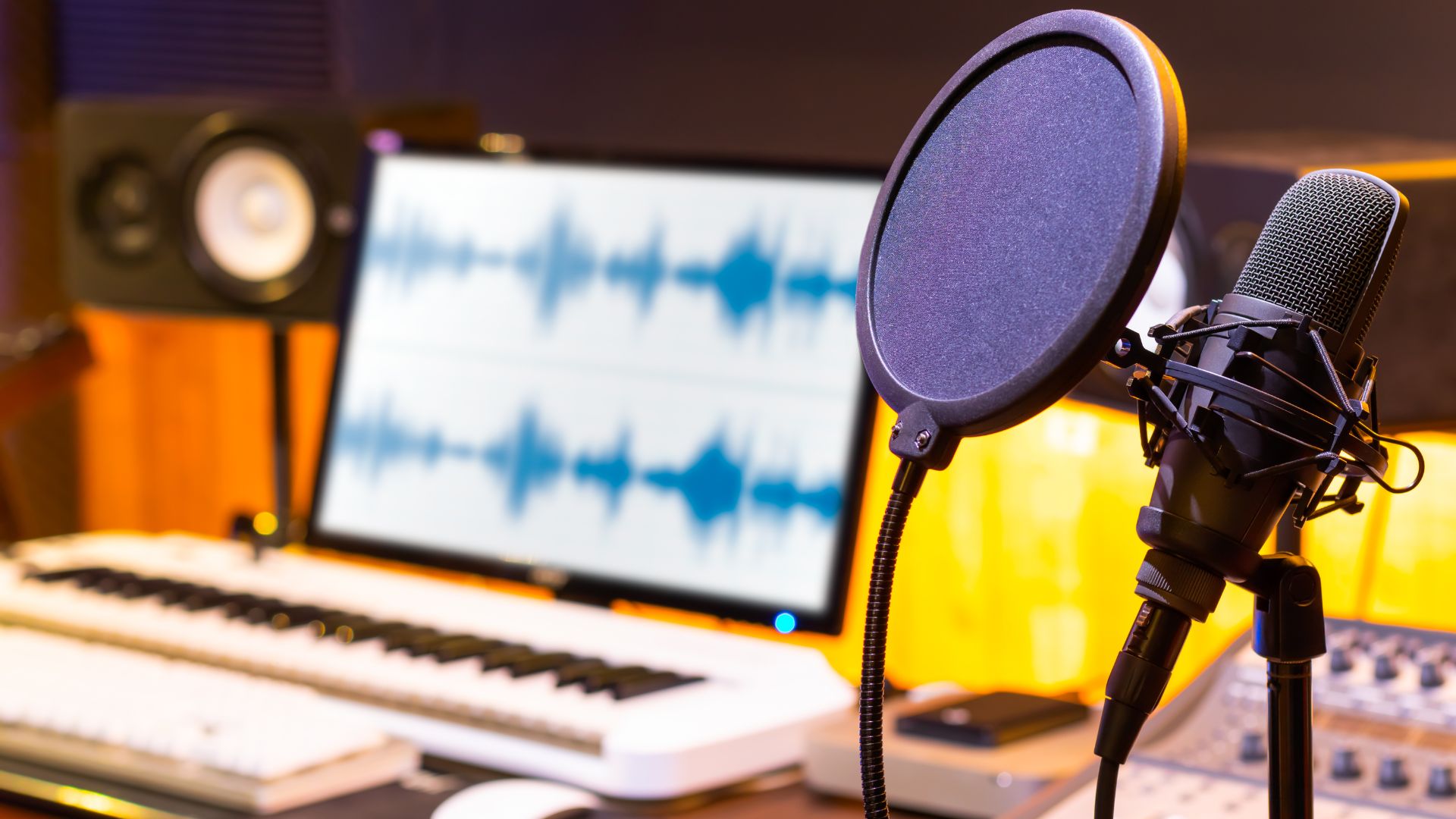Don’t know where to start when starting a podcast? Or are you tired of settling for mediocre podcast quality? This ultimate podcast starter kit will help get you started or make your next episodes sound like a professional production.
I’m Niall Mackay, founder of Seven Million Bikes Podcast, and when I first started in 2019 I only had a Blue Yeti Mic, a 2010 MacBook Pro, and Garageband. I didn’t know what to do or what equipment to buy! But I got a mic, used my old laptop and the free software to edit, and got started.
As an experienced podcaster who has spent years honing my craft, I now understand the importance of having a reliable and efficient podcast starter kit.
By using the proper equipment, you can elevate the overall listening experience and establish credibility with your listeners.
My podcast starter kit includes all the must-have essentials as well as additional gear that will help you unlock the full potential of your podcast. From microphones to audio interfaces, headphones to pop filters, we’ve got you covered.
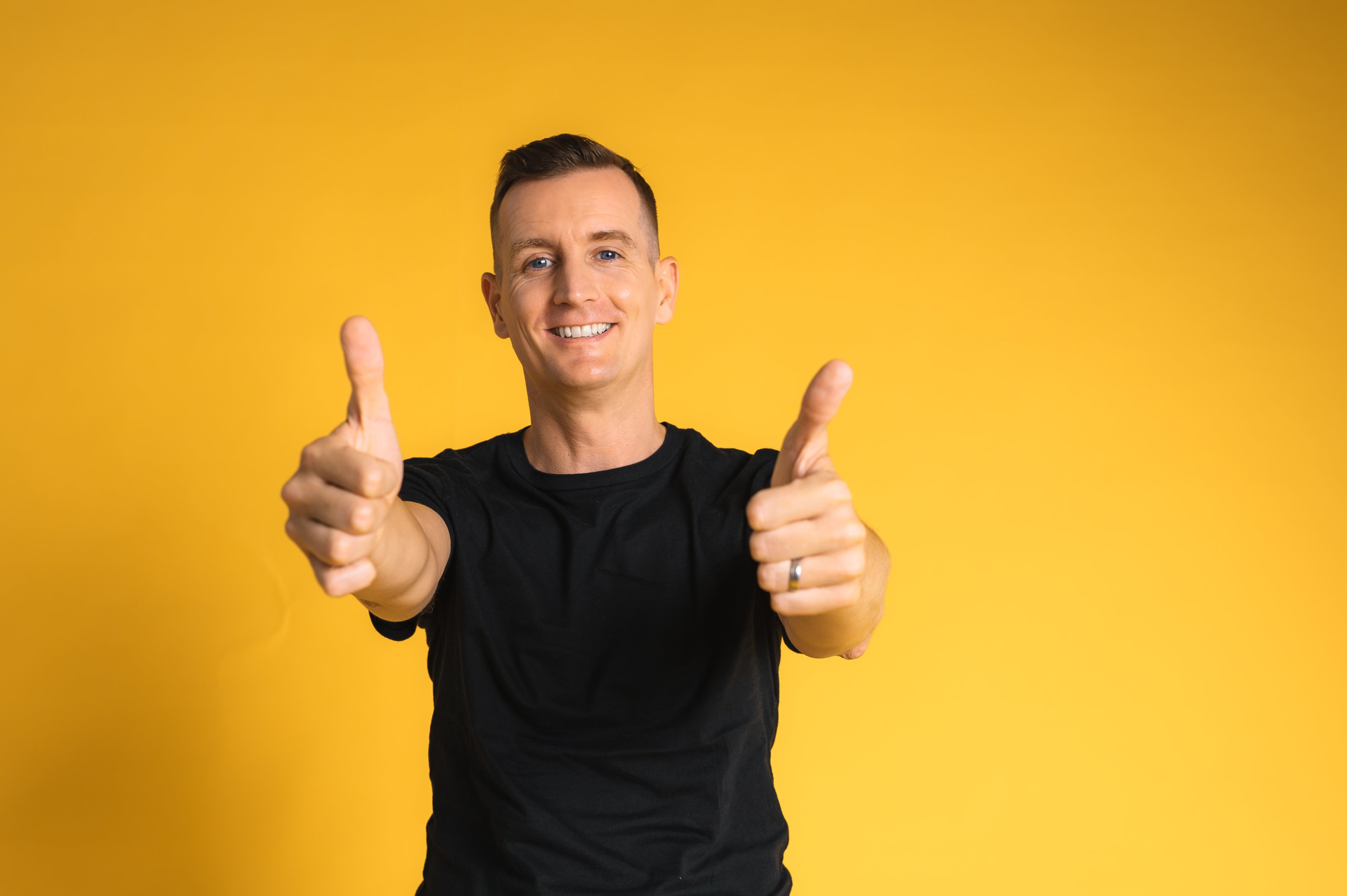
Why Do You Need A Podcast Starter Kit
A podcast starter kit typically includes the fundamental items needed to record, edit, and produce high-quality podcast episodes.
This is the essential equipment needed to get started saving you the time needed for extensive research or knowledge about each individual product.
Choosing the suitable equipment is crucial for several reasons:
Professional Sound Quality
Good equipment ensures that your podcast episodes have excellent sound quality.
Clear and crisp audio enhances the listening experience for your audience, making it easier for them to engage with your content. High-quality microphones and headphones help capture and reproduce your voice with clarity and depth.
Audience Engagement
When your podcast sounds professional, it increases the credibility and professionalism of your show. Listeners are more likely to stay engaged and listen to your episodes when the audio is clear and enjoyable. A podcast that delivers a pleasant listening experience encourages repeat listenership and fosters a loyal audience.
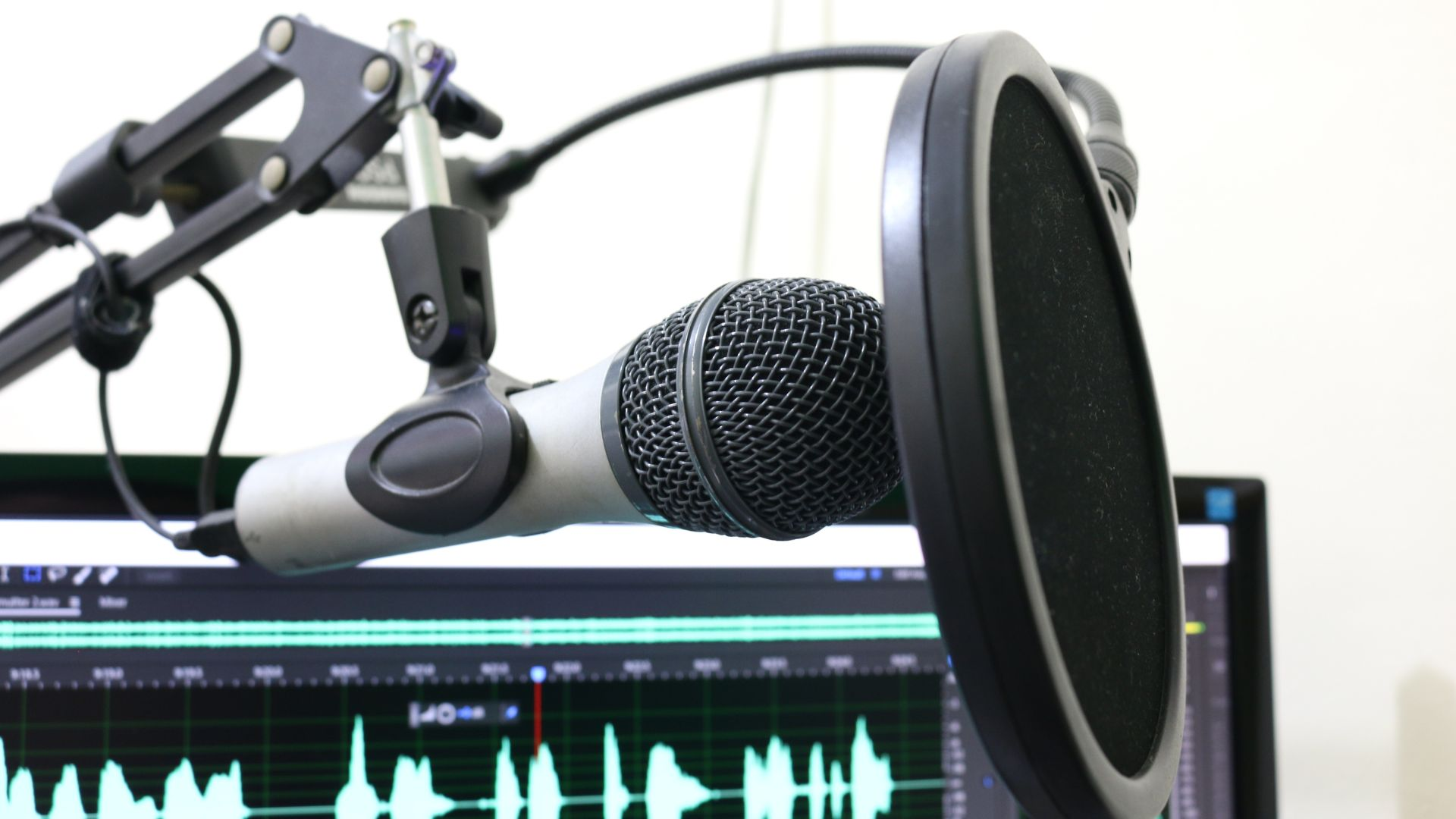
Reflecting Your Brand
Your podcast equipment serves as a representation of your brand and the value you bring to your listeners. By investing in good equipment, you demonstrate your commitment to producing high-quality content and convey a sense of professionalism and expertise.
Future Expansion And Growth
Starting with a solid podcast starter kit gives you room to grow and expand your podcast in the future. Upgrading your equipment becomes easier when you have a foundation of good-quality gear to build upon.
It’s important to note that the specific components and brands may vary based on personal preferences, budget, and the podcast’s requirements.
Some Notes When Choosing Podcast Starter Kits
The best podcast starter kit is the one that meets your needs. Take your time to research and compare a few different options before making a final decision.
Podcast Types And Formats
Consider the nature of your podcast. Is it a solo podcast, an interview-style podcast, or a multi-host discussion? Different types of podcast may require different equipment setups. For example, a solo podcast may only require a single microphone, while an interview-style podcast may require multiple microphones and additional equipment.
Moreover, define the number of people involved in your podcast. If you have multiple guests or hosts, ensure that the starter kit provides enough microphones, cables, and accessories for each participant.
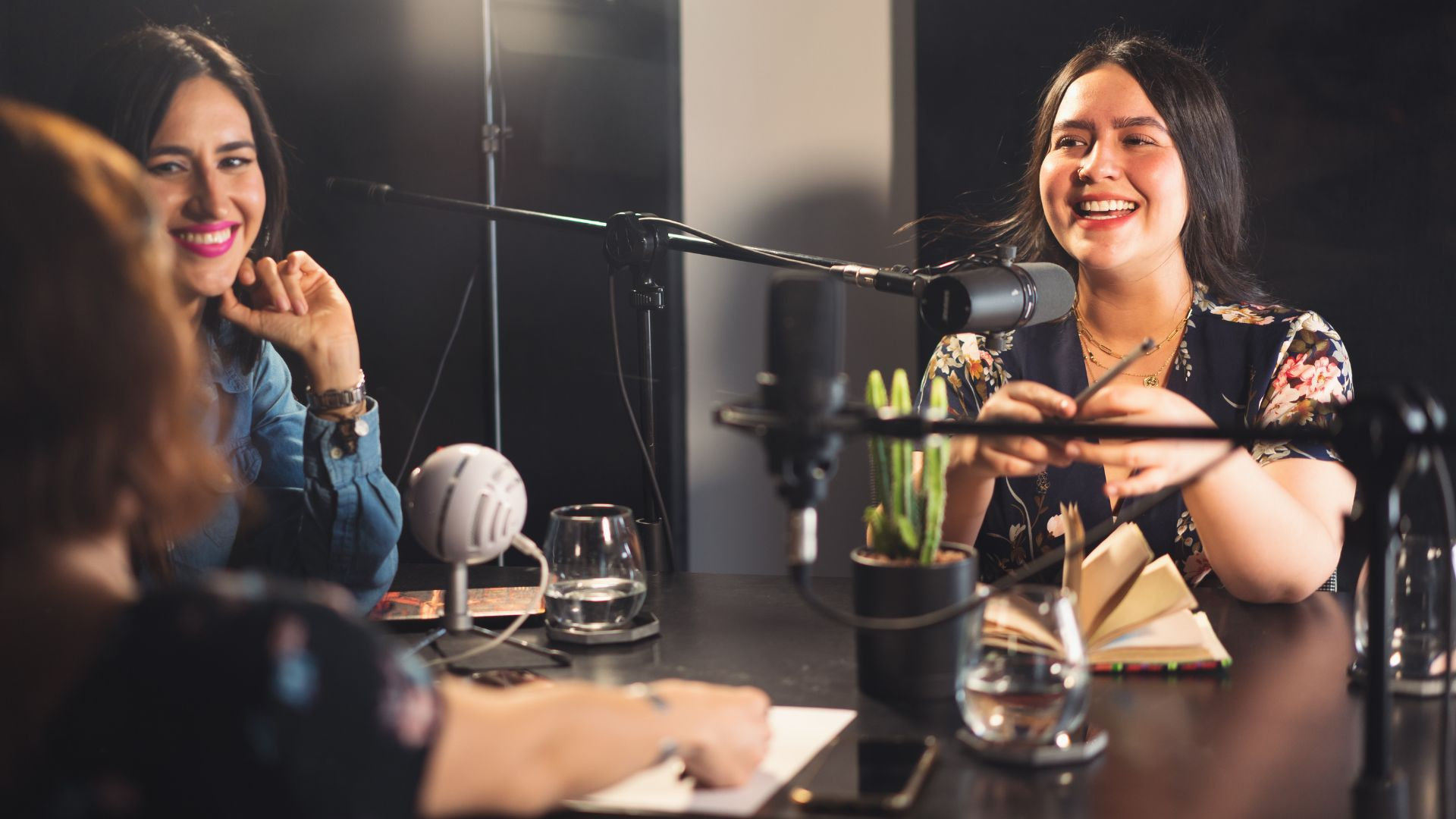
Budget
Determine your budget for purchasing podcasting equipment. Consider how much you are willing to invest in your podcasting setup and find a starter kit that fits within that budget.
Consider the level of sound quality you want to achieve. Higher-quality microphones and audio interfaces tend to provide better sound reproduction, and reduce background noise but at a higher price. Assess your needs and find a starter kit that meets your desired audio standards.
Recording Environment
Evaluate the recording environment where you will be conducting your podcast. If you are in a noisy or acoustically untreated space, you may need additional accessories like pop filters, windshields, or acoustic panels to improve the audio quality.
Think about whether portability is important to you. If you plan to record on the go or outside of a traditional recording studio or setup, look for starter kits that are lightweight and easily transportable. For on-the-go podcasters, it’s important to learn how to start a podcast on iPhone, it’s really helpful when you’re recording while you’re outside.
Compatibility
Ensure that the starter kit you choose is compatible with your recording software, computer operating system, and any other necessary equipment. Check for compatibility with popular recording and editing software such as GarageBand, Audacity, or Adobe Audition.
Your podcast can grow in the future, so if you plan to add more hosts, guests, or equipment, choose a starter kit that allows for easy scalability and integration of additional components.
The Ultimate Podcast Starter Kit- Must-have Gear
Although podcast starter kits can vary depending on your specific needs and preferences, there is some essential gear that you should include in your kit to produce professional podcast episodes. These podcast equipment ensure high-quality audio recording and a smooth production process.
Microphone
A good microphone is obviously a must-have gear in your podcast equipment kit.
There are various types of podcast microphones available for podcasting, each with its own characteristics and suitability for different podcasting scenarios. Here are some common types of microphones you might encounter in podcast starter kits
Dynamic Microphone
Dynamic mics are durable, versatile, and can handle high sound pressure levels. They are excellent for recording vocals and can handle loud environments without distortion. Dynamic microphones are less sensitive to background noise, making them ideal for recording in less controlled acoustic environments or when multiple people are sharing a single microphone.
- Audio-Technica ATR2100x-USB
- Shure SM7B
- Electro-Voice RE320
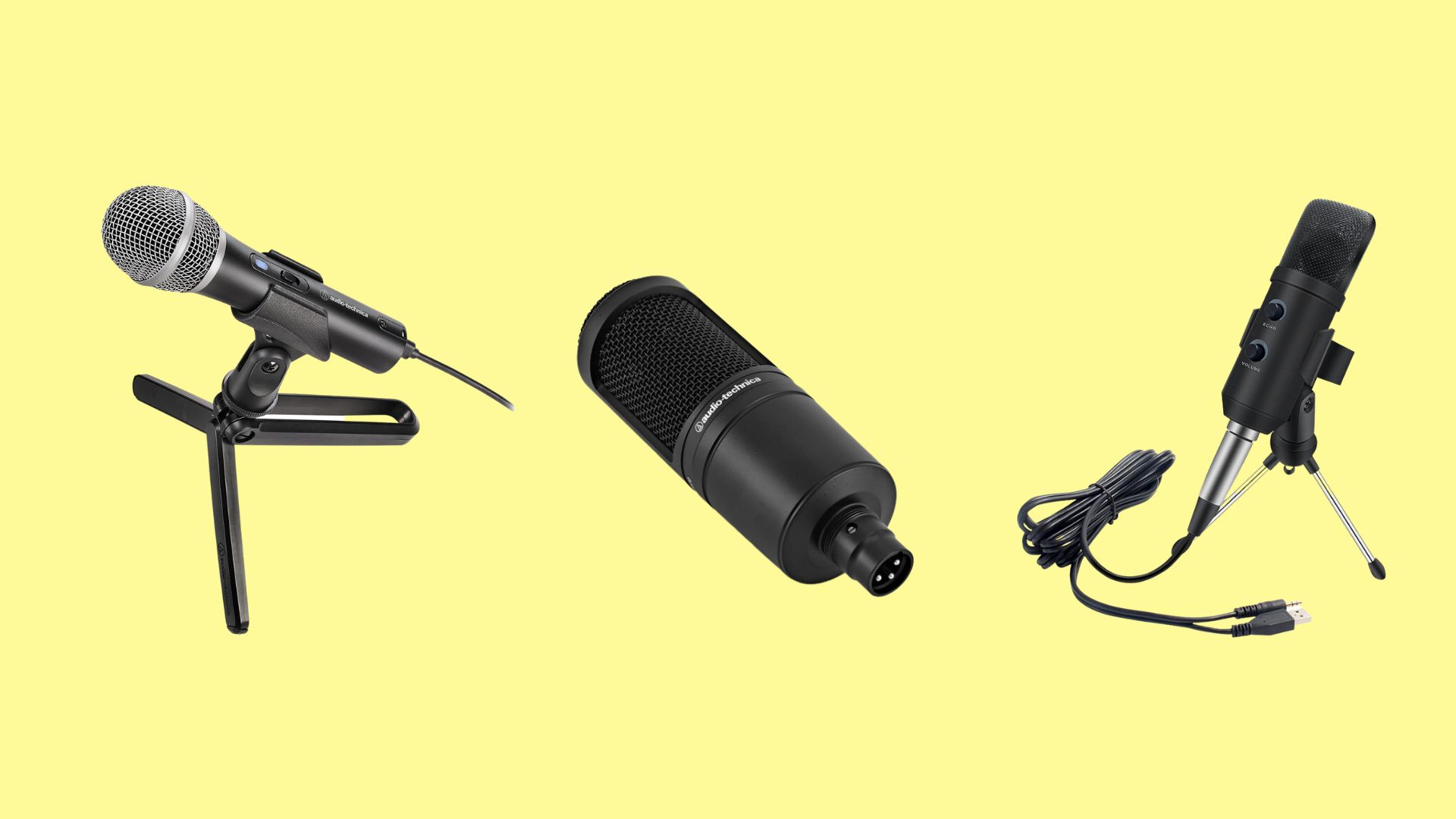
Condenser Microphone
Condenser mics are known for their sensitivity and accuracy in capturing detailed audio. They require power, either through batteries or phantom power provided by an audio interface or mixer.
A condenser mic tends to have a wider frequency response and is ideal for capturing vocals with great clarity and acoustic instruments. However, it is more sensitive to background noise and may require a quieter recording environment.
- Audio-Technica AT2020
- Rode NT1
- AKG C214
USB Microphone
USB microphones are popular among podcasters due to their simplicity and ease of use. They have a built-in analog-to-digital converter, allowing direct connection to a computer’s USB port. A USB microphone is typically a condenser microphone and provides great sound quality for solo podcasting or recording with a small number of hosts. It is convenient for beginners and those who don’t want to invest in additional audio equipment.
- Blue Yeti
- Audio-Technica ATR2500x-USB
- Samson Q2U
XLR microphone
XLR microphones require an audio interface or mixer with XLR inputs to connect to your recording device. They offer professional sound quality and versatility, making them suitable for podcasters who prioritize audio fidelity.
These are some highly recommended XLR mics:
- Shure SM7B
- Electro-Voice RE20
- Audio-Technica AT2035
Lavalier Microphone
Lavalier mic, also known as lapel microphone, is small and can be clipped onto clothing. It provides hands-free operation and is commonly used in interviews or situations where mobility is important. Lavalier microphone is typically omnidirectional or has a cardioid pickup pattern and are well-suited for capturing dialogue in a close-proximity setting.
- Audio-Technica ATR3350xiS
- Rode SmartLav+
- Sennheiser ME 2-II
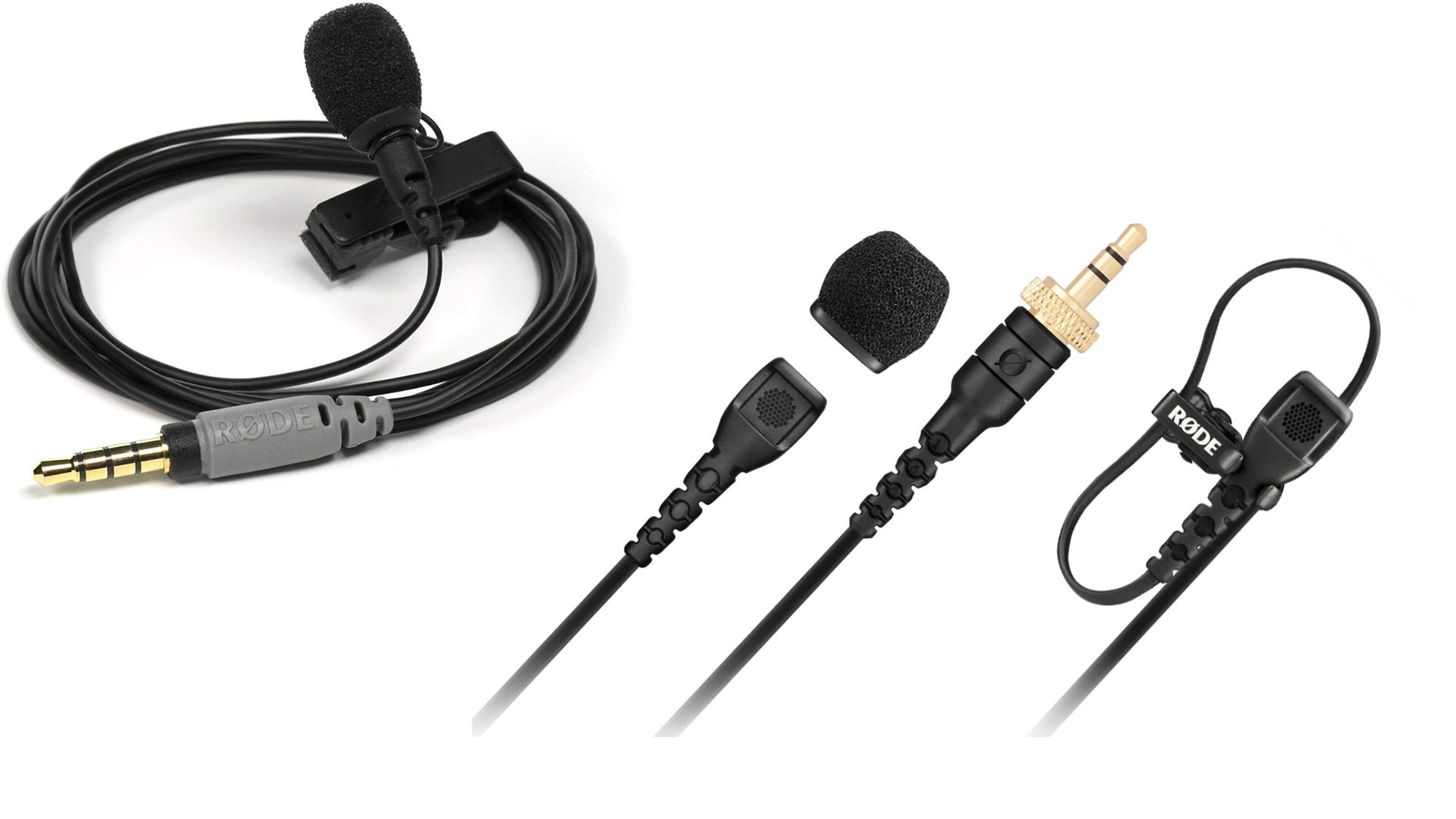
In my podcasting journey, I have used different types of podcast microphones, each type has its own pros and cons and is suitable for different purposes. To get the best result, you should use some additional equipment, keep scrolling to know what they are!
Headphones
When I first started on my podcast journey, I didn’t use headphones, and I was wrong. A good pair of podcast headphones offers accurate sound quality, isolates external sound, and gives the podcast host or editor a good editing process.
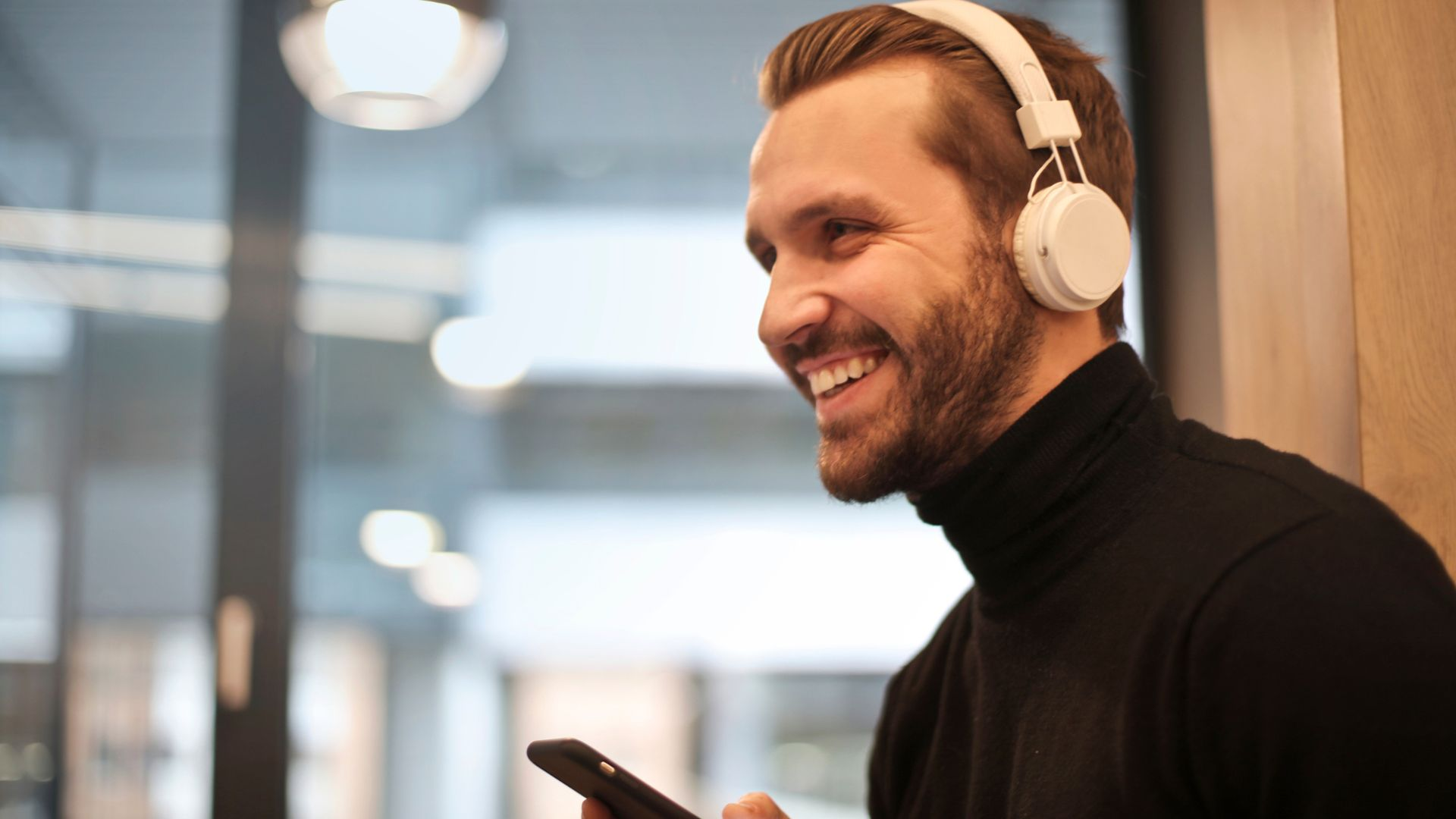
When assembling a podcast starter kit, selecting the right headphones is essential for monitoring audio, editing, and ensuring a professional end result. Here are some types of professional studio headphones commonly used in podcasting:
Closed-Back Headphones
These headphones are designed to block out external noise, allowing you to focus on the audio being recorded or edited. They provide a balanced sound profile and good sound isolation, making them suitable for critical listening and ensuring that you can hear all the details in your podcast.
- Audio-Technica ATH-M50x
- Sony MDR-7506
Open-Back Headphones
Open-back designs allow air to flow through the ear cups, preventing heat build-up and providing extended comfort during long recording or editing sessions. They offer a wider soundstage and a more natural audio experience, mimicking the sensation of listening to speakers in a room.
- Sennheiser HD 600
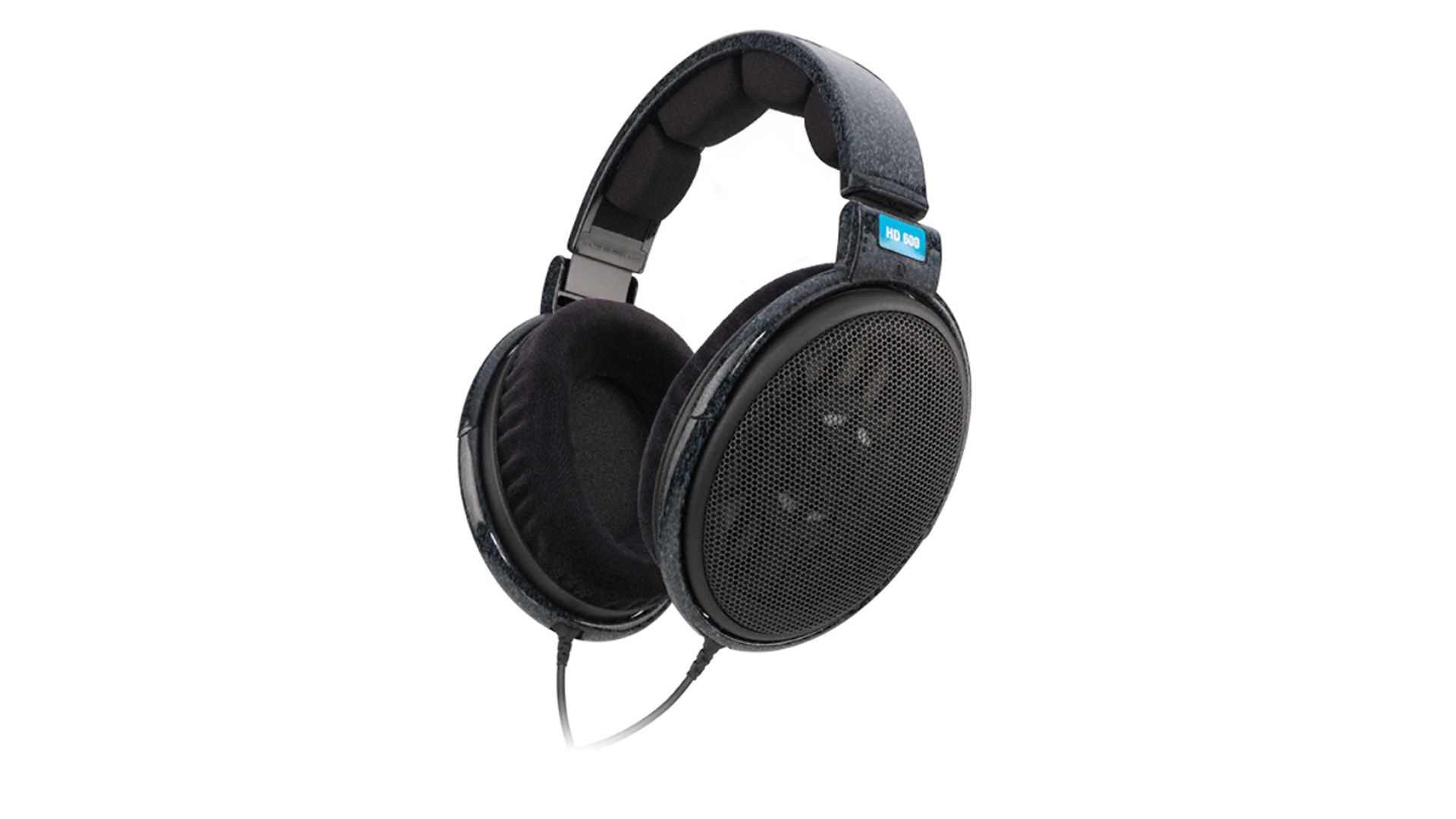
Wireless Headphones
Wireless headphones eliminate the need for cables, giving you the freedom to move around during recording or editing without restrictions. Bluetooth connectivity allows for easy pairing with various devices, making them versatile for use with smartphones, tablets, or computers.
Wireless headphones often come with extended battery life, ensuring uninterrupted usage for long recording sessions or when you’re on the go.
- Sony WH-1000XM4
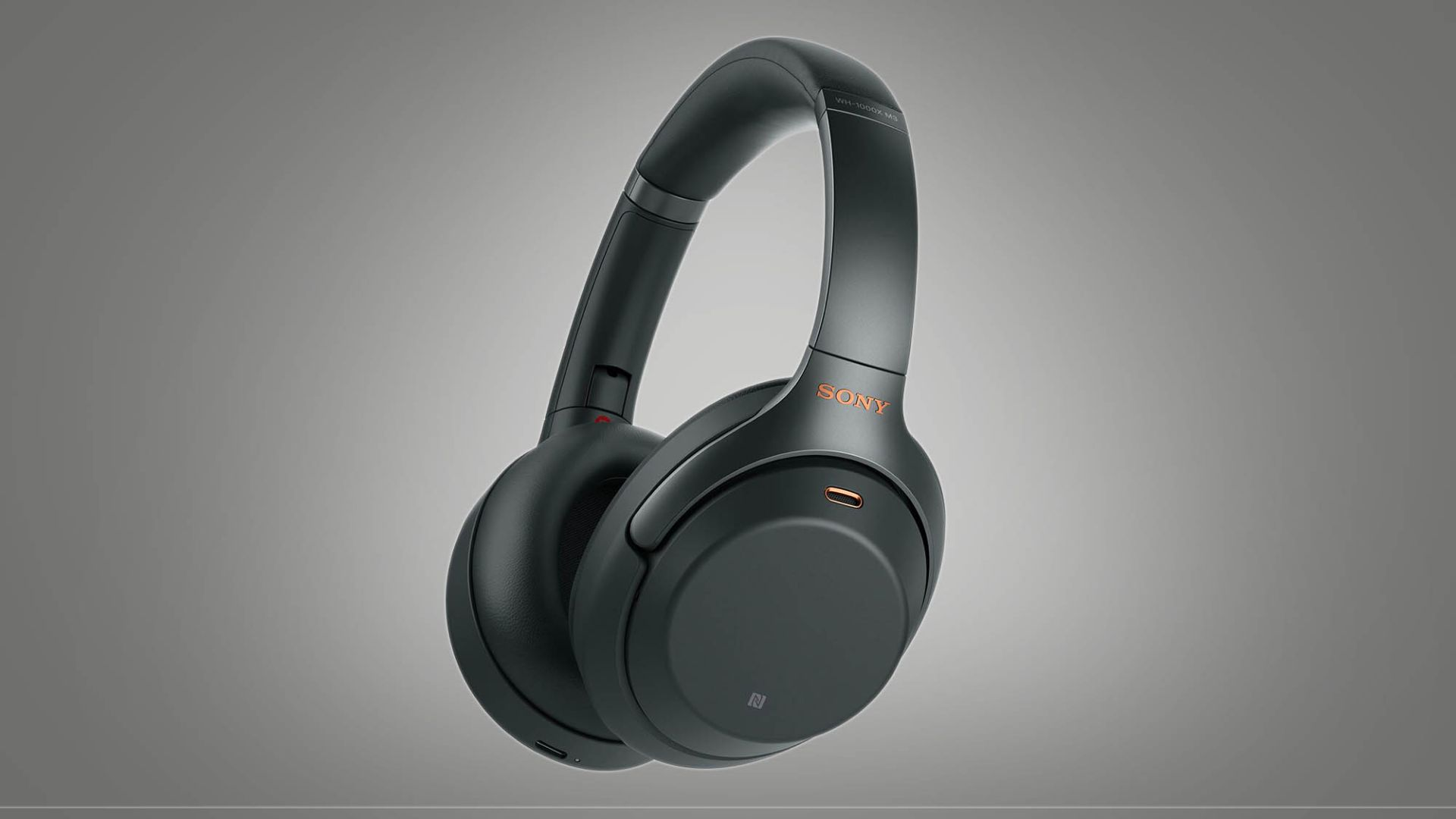
Computer/Laptop
You may think a computer or laptop is not really necessarily included in your podcast equipment bundle list, but it turns out to be one of the important ones.
Recording And Editing
A computer provides the necessary processing power to record and edit your podcast episodes. You can use recording software like GarageBand (for Mac computers) or Audacity (for both Mac and PC) to capture high-quality audio and make edits to your recordings.
Some software is still available on smartphones, but with a computer, you have the flexibility to edit your podcast episodes at your own pace, multi-track recording, add music, and sound effects, or adjust audio levels as needed easily.
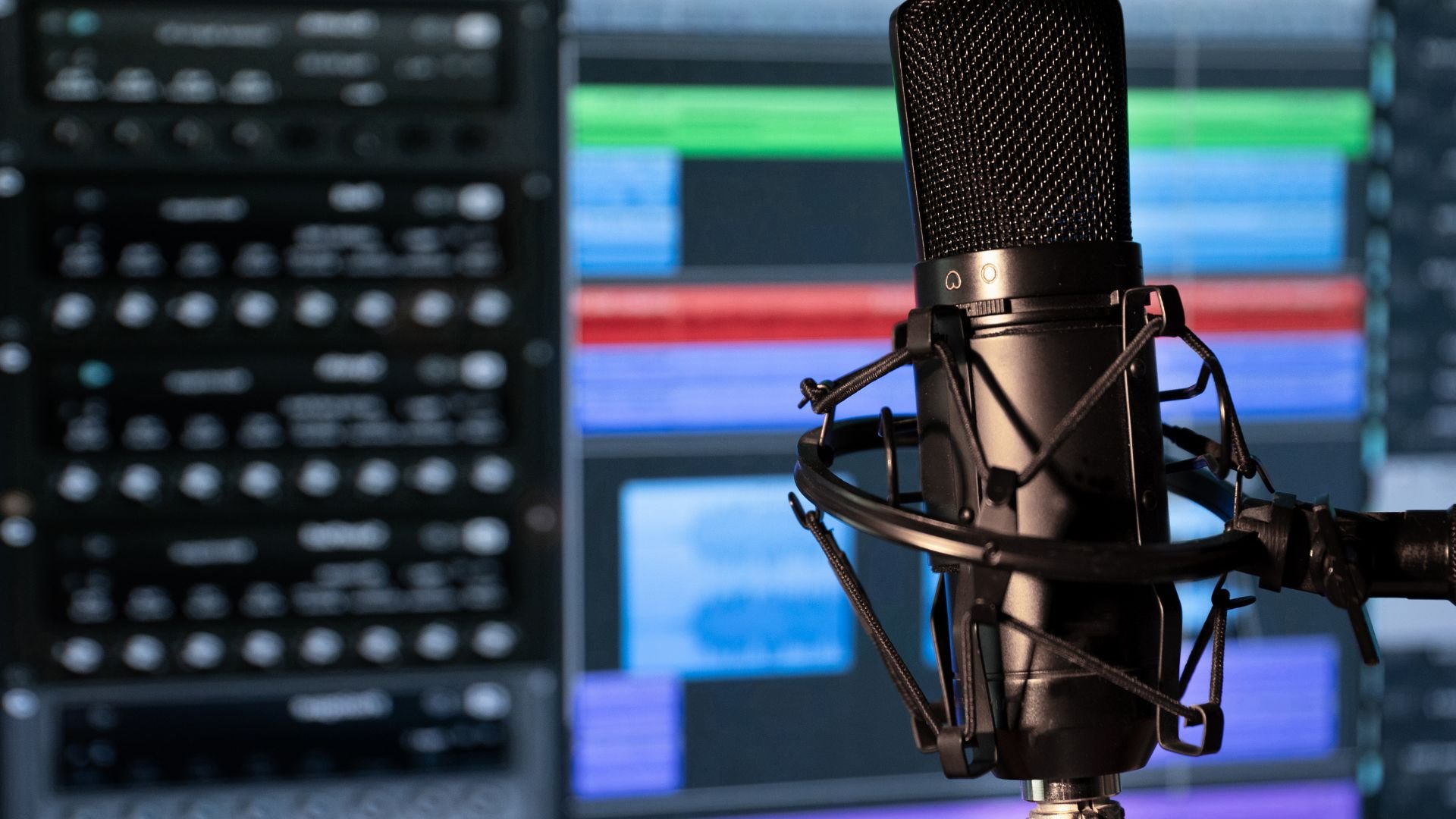
Storage and Organization
Using only a smartphone offers less storage space. I don’t want you to have to delete half your pictures!
A computer allows you to store and organize your podcast files, including audio recordings, scripts, and show notes. It provides a centralized location for managing your podcast content.
Having a computer also allows you to transfer your finished episodes to a podcast hosting platform for distribution to various podcast directories.
I would also recommend buying an external solid-state hard drive.
Remote Interviews and Collaborations
A computer with internet access enables you to conduct remote interviews or collaborate with co-hosts or remote guests who may be located in different geographical locations.
You can use communication platforms like Zoom, Skype, or SquadCast to connect with your guests and record high-quality interviews or discussions. The common way I use to record my remote interview is to use Descript Zoom remote recording.
Remember to also consider your budget and personal preferences when selecting a computer or laptop. There are some things to notice when choosing a PC/laptop as podcasting equipment:
- Processing Power
- Storage Space
- Connectivity
- Audio Performance
Research different models, compare specifications, read reviews, and choose one that fits your podcasting needs and workflow.
Audio Interface or Mixer
To combine microphones with your computer or mix multiple audio sources together, you will need an audio interface or a mixer in your podcast starter kit.
If you’re using an XLR mic, an audio interface serves as the bridge between your XLR microphone and your computer. It is a device that converts audio data from your microphone into digital signals so that your PC/laptop can process and record.
When choosing an audio interface or mixer for your podcast starter kit, consider factors such as the number of XLR microphone inputs you require, the quality of preamps, compatibility with your recording software, and your budget.
I recommend the PodTrak P4 for its ease of use!
Recording and Editing Software
A Digital Audio Workstation (DAW) is a software application used for recording, editing, and producing audio content. It is an essential tool in a podcast starter kit as it provides a comprehensive set of features for creating high-quality podcasts.
Descript
My number one recommendation is Descript.
Descript’s ease of use, innovative text-based editing, and collaboration features make it an attractive choice for podcasters looking for a streamlined editing process.
One of the standout features of Descript is its ability to edit audio and video content by editing the text transcription directly. You can make changes to the text, and the corresponding audio or video segment will be automatically edited accordingly.
Descript automatically transcribes your audio and video files, saving you time on manual transcription. It utilizes advanced voice recognition technology to generate accurate transcripts, which can be further edited within the software.
More Editing Software
- Adobe Audition: Adobe Audition is a professional-grade audio editing software that offers a wide range of features for podcast production. It provides a comprehensive set of tools for recording, editing, mixing, and mastering audio.
- GarageBand: GarageBand is a free DAW that comes pre-installed on Apple devices. It offers a user-friendly interface and a range of features suitable for podcast editing. GarageBand includes basic recording and editing tools, virtual instruments, and audio effects. It’s a great option for beginners or podcasters on a tight budget.
- Audacity: Audacity is a free, open-source audio editing software that has been widely used in the podcasting community for many years. It offers a simple and straightforward interface with essential editing tools for recording, editing, and exporting audio files. While not as feature-rich as some other DAWs, Audacity is a reliable choice for basic podcast editing.
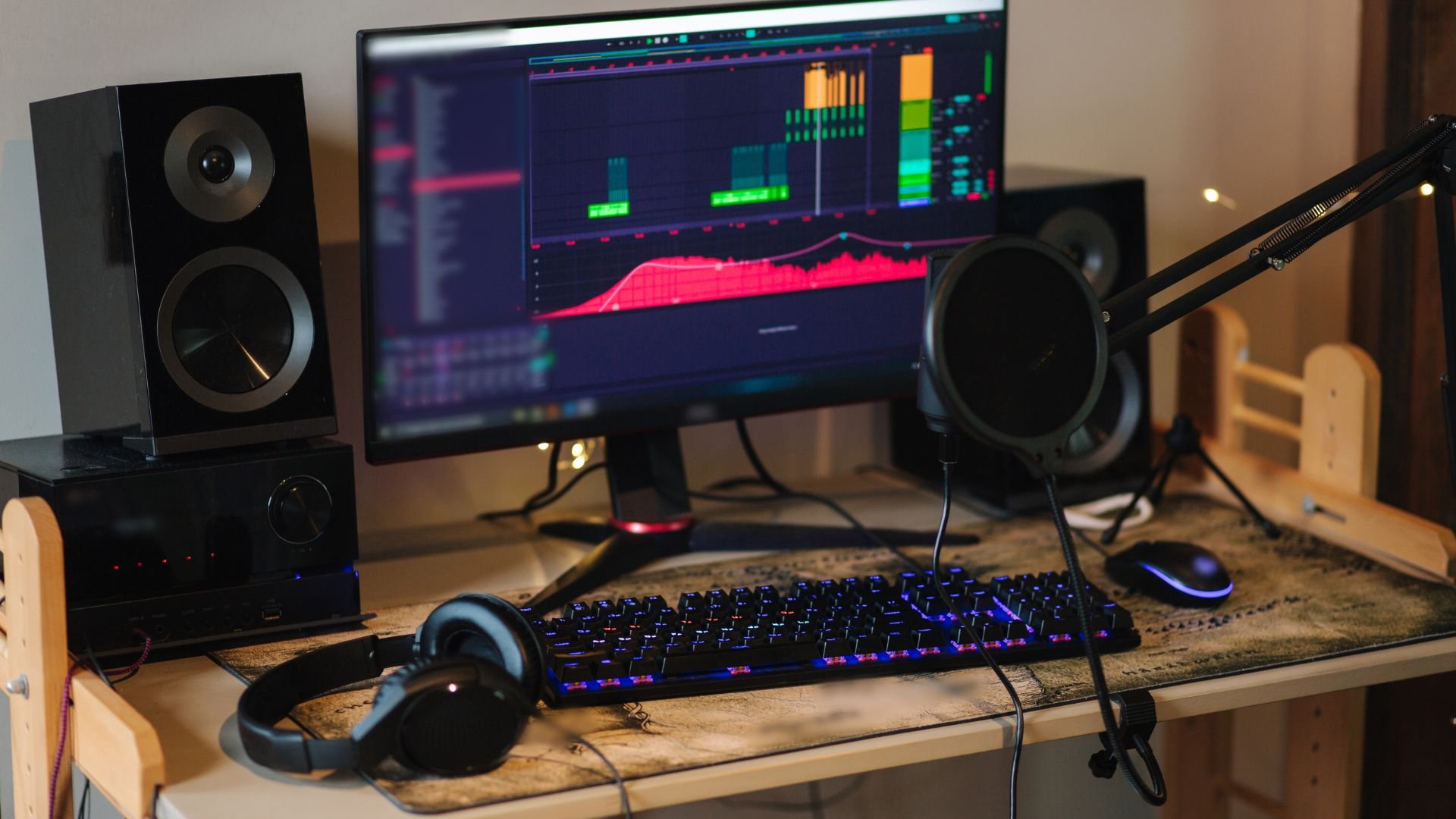
The Ultimate Podcast Starter Kit- Additional Gear
As I said, we need additional help from other gears to get the best result.
Along with all the gear and essential audio equipment mentioned earlier, there are additional gears that can enhance the audio quality and overall production value of your podcast. Including these in your best podcast starter kits can help you achieve professional-sounding results and create a more engaging listening experience.
Portable Digital Recorder
A portable digital recorder is a handy device that allows you to record audio on the go without the need for a computer or additional equipment. It is a self-contained unit with built-in microphones or microphone inputs, preamps, and recording capabilities.
Portable recorders are commonly used for field recording, interviews, podcasting, live music performances, and capturing ambient sounds.
Price range: $100-400
Boom Arm/ Mic Stand
A boom arm or microphone stand is an essential accessory in a podcast starter kit, especially if you’re using a microphone that requires a stable and adjustable mounting solution. It helps position the microphone correctly for optimal sound capture and allows you to position it at a comfortable height and distance from your mouth.
A boom arm is a flexible arm with adjustable joints that allows you to position the microphone precisely. It typically clamps or attaches to your desk or table and extends over your workspace.
A mic stand, on the other hand, is a more traditional stand that holds the microphone in a fixed position. It consists of a vertical pole attached to a stable base, with a microphone holder or clip at the top.
Price range: $30-200
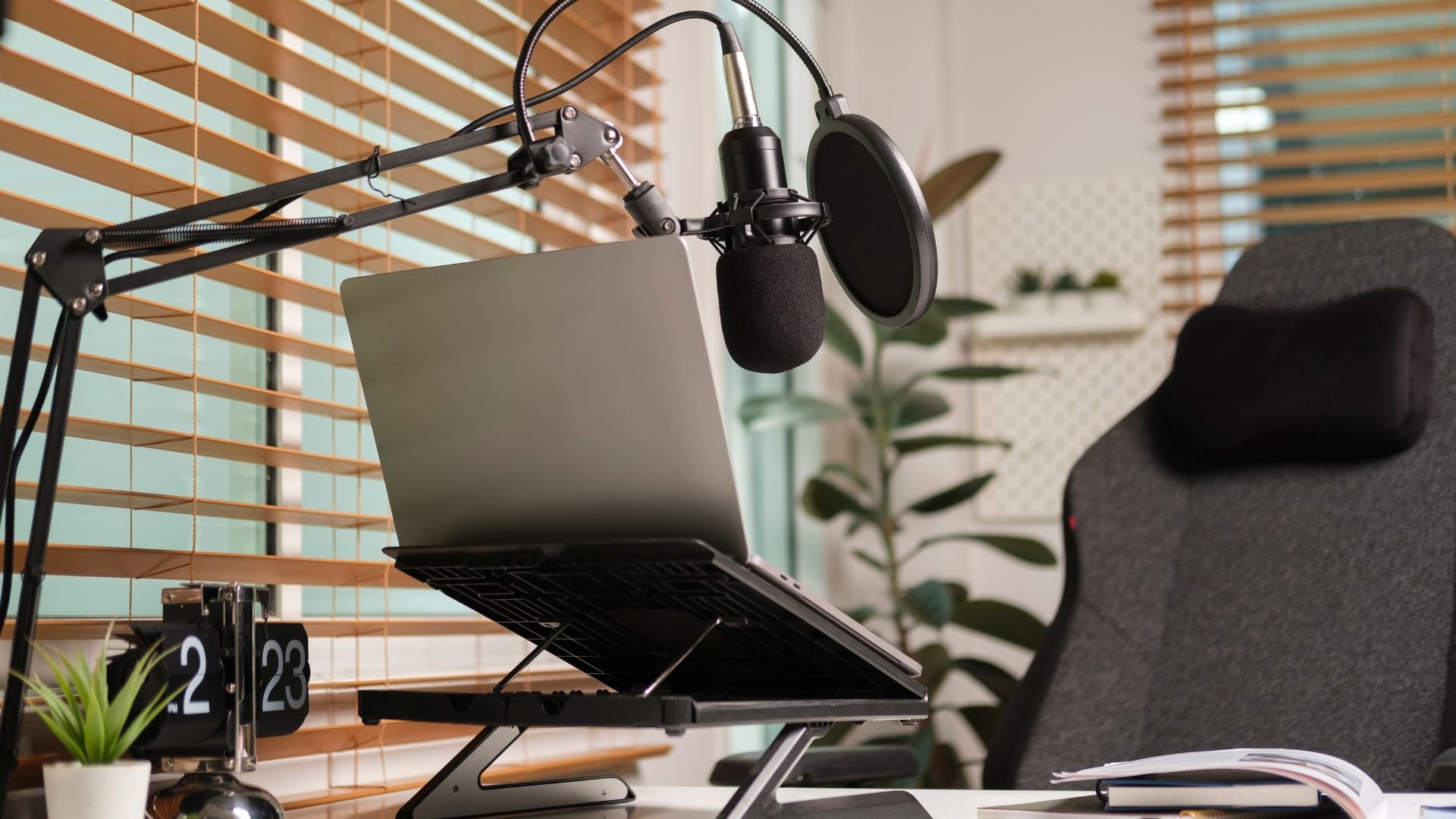
Pop Filter
A pop filter is a simple yet effective accessory that can significantly improve the audio quality of your podcast recordings.
A pop filter is a screen placed in front of the microphone to reduce plosive sounds (pops and blasts of air) caused by popping sounds. It helps to maintain a clean and clear audio signal by minimizing unwanted noise. Pop filters are particularly useful when recording vocals and spoken content.
On average, you can find pop filters ranging from $10 to $30 USD.
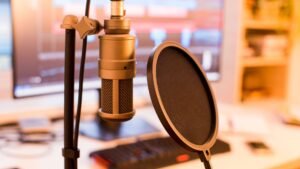
Shock Mount
A shock mount is an accessory used to isolate a microphone from vibrations and handling noise. It helps minimize unwanted mechanical sounds that can be picked up by the microphone, such as desk vibrations, footsteps, or accidental bumps.
A typical shock mount consists of a cradle or suspension system that holds the microphone securely while providing a degree of flexibility and shock absorption. It effectively decouples the microphone from its mounting point, reducing the transmission of vibrations and resulting in cleaner audio recordings.
A shock mount ranges in price from around $20 to $100 USD.
It’s important to choose a shock mount that is compatible with your microphone model to ensure a proper fit.
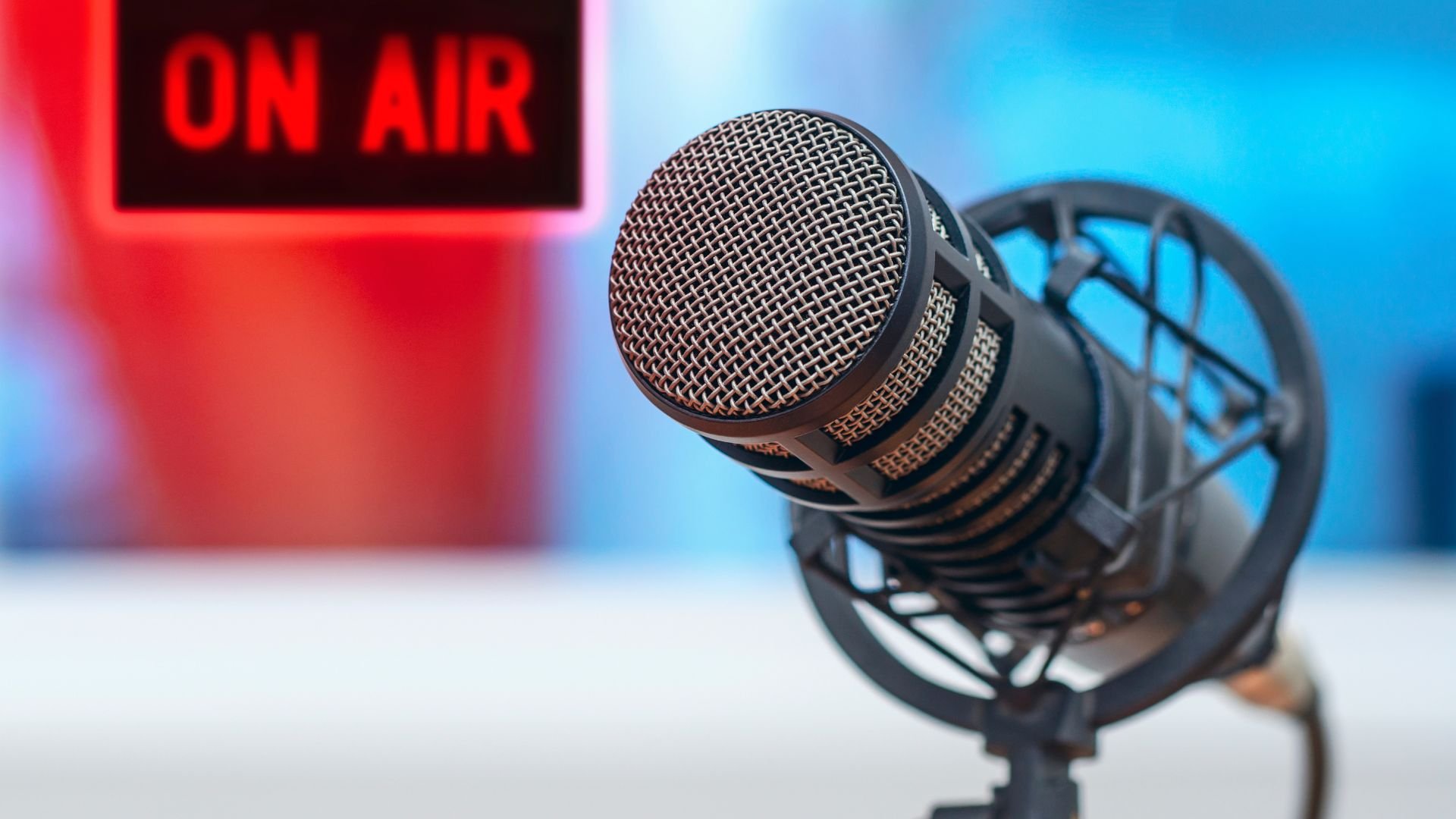
For more Podcast setup ideas, read my old blog to set up your equipment on a budget.
XLR cables
Investing in quality XLR cables helps ensure a reliable and interference-free audio connection, contributing to the overall professional sound quality of your podcast recordings.
An XLR cable is designed for balanced audio signals, which helps minimize noise and interference over longer cable runs. It comes in various lengths to accommodate different recording setups. Common lengths range from a few feet to 25 feet or more.
Price: $10-40
The Ultimate Podcast Starter Kit Summary
Choosing the best podcast kit is a critical step in launching your podcasting journey. As a podcaster myself, I understand the importance of having reliable equipment that enables you to produce high-quality content and engage your audience effectively.
When selecting a podcast starter kit, consider your budget, podcast type, the number of hosts, and any additional needs specific to your show. Investing in a quality microphone, headphones, audio interface or mixer, and recording software sets the foundation for a professional-sounding podcast.
Always prioritize the listener experience. Clear and immersive audio helps keep your listener engaged throughout your episodes. A well-chosen podcast starter kit sets you up for success and paves the way for creating compelling content that resonates with your listeners.
So, take the time to research, compare options, and select the podcast starter kit that aligns with your goals and aspirations. With the right equipment in hand, you’re well on your way to producing an exceptional podcast that leaves a lasting impression on your audience.

